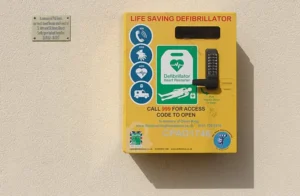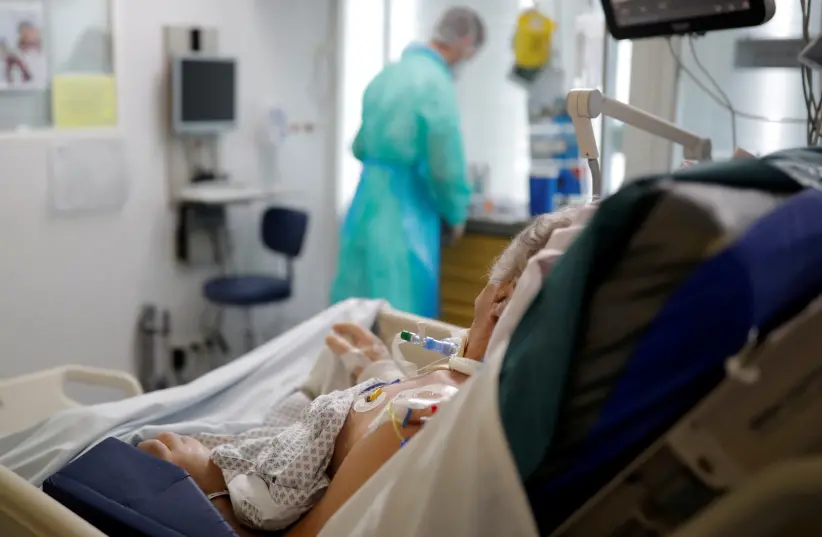The results of the study suggest that the pandemic has helped clinicians gain a greater understanding of the risks, burdens and limitations of intensive care.

The COVID-19 pandemic may have changed the way doctors make end-of-life decisions, particularly decisions centering on Do Do Not Attempt Cardio-Pulmonary Resuscitation (DNACPR), orders, treatment escalation, and views on euthanasia and physician-assisted suicide, a new UK-based study has found.
Do not resuscitate orders
The peer-reviewed study, published in the Journal of Medical Ethics, found that of the 231 study participants, over half reported issuing more DNACPR orders than they had done prior to the pandemic. All the study participants were doctors from a variety of specialties and fields who had worked in the UK’s National Health Service (NHS) during the COVID-19 pandemic.
Participants were sent a survey and asked to select which factors contributed most significantly to their DNACPR decisions both pre-pandemic and during the pandemic. The most cited factor was “likely futility of CPR” with 88.3% of people citing it as the pre-pandemic reason and 90.9% as the reason at the time of the study.
Other high-level factors included patient comorbidities (both 88.7% pre-pandemic and currently), and patients’ wishes (83.5% pre-pandemic and 80.5% now).

Asked why their decision-making processes might have changed since the start of the pandemic, doctors cited an increased sense of urgency among clinicians to make DNACPR decisions as early as possible in a patient’s admission, and a change in culture that encouraged clinicians to consider DNACPR decisions almost by default for all patients, rather than just for those at risk of cardiac arrest.
Intensive Therapy Units vs palliative care
In the second section of the survey, participants were asked if they had either a higher or lower threshold for referring or accepting patients to Intensive Therapy Units (ITU) during the pandemic in comparison to before the pandemic.
In response to the question, 2.2% of people said they referred significantly more patients to the ITU than before, and 45.9% said they referred a somewhat higher amount than before. In contrast, 22.5% said that they referred significantly fewer people to the ITU than before the pandemic, and 3.0% said the number was significantly lower.
The participants were then asked the same question but this time with regard to recommending or accepting patients for palliative care. While 58.9% of respondents said that there was no significant change in how or when they recommended people to palliative care, 22.5% said they were recommending an increased number of people to palliative care now than they had before.
Asked what factors contributed to this change, one respondent stated that “seeing the amount of suffering in the ICU has definitely made me reconsider whether many patients would tolerate or want it.” Another added that “COVID was vicious…palliation meant allowing a comfortable death… I think we all realized there was no good in prolonging the suffering.”
Euthanasia and physician-assisted suicide
The final section of the survey dealt with the question of euthanasia and physician-assisted suicide, both prior to and during the pandemic.
Prior to the pandemic, 32.5% of the respondents had been strongly opposed to the legalization of euthanasia with 14.7% somewhat opposed, 20.3% neutral or unsure, 21.2% somewhat in favor, and 11.3% strongly in favor of legalizing it.
When asked to state how their views were impacted by the pandemic, the respondents reported some marginal changes. 32.9% of respondents stated they are now strongly opposed, 14.3% are somewhat opposed, 18.2% are neutral or unsure, 23.4% are somewhat in favor and 11.3% are strongly in favor.
The study notes that the change in views is minimal enough that it does not appear to be statistically significant and therefore can be attributed to chance rather than to the impact of the pandemic.
Results of the study
The researchers note that the most statistically significant portion of the survey deals with the question of Do Not Resuscitate orders. They also note that this increase in DNACPRs did not decrease or return to pre-pandemic levels even once COVID-19 hospital cases returned to relatively low levels.
“At the start of the pandemic, [clinics were advised] that in the event of NHS resources becoming unable to meet demand, resource allocation decisions should follow a utilitarian ethic,” write the paper’s authors.
“However, what is clear from our results is that for a significant proportion of clinicians, resource limitation continued to factor into clinical decision making even when pressures on NHS resources had returned to a near normal level.”
The survey results also suggest that the pandemic has helped clinicians gain a greater understanding of the risks, burdens and limitations of intensive care, and further educated them in the early recognition of dying patients and the value of early palliative care, the researchers added.
“What is yet to be determined,” they concluded, “is whether these changes will now stay the same indefinitely, revert back to pre-pandemic practices, or evolve even further.”

